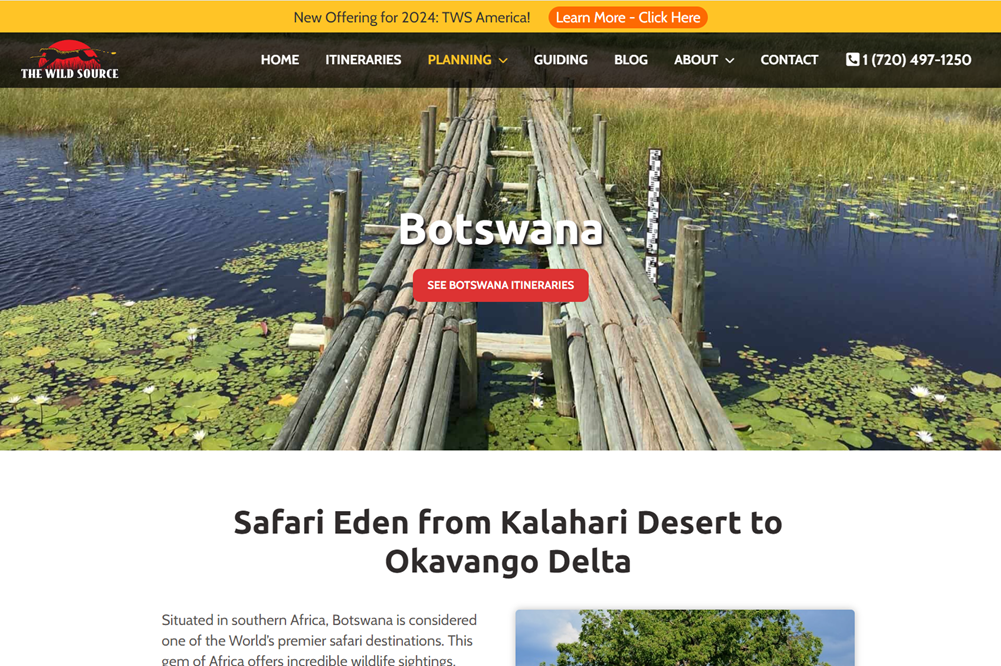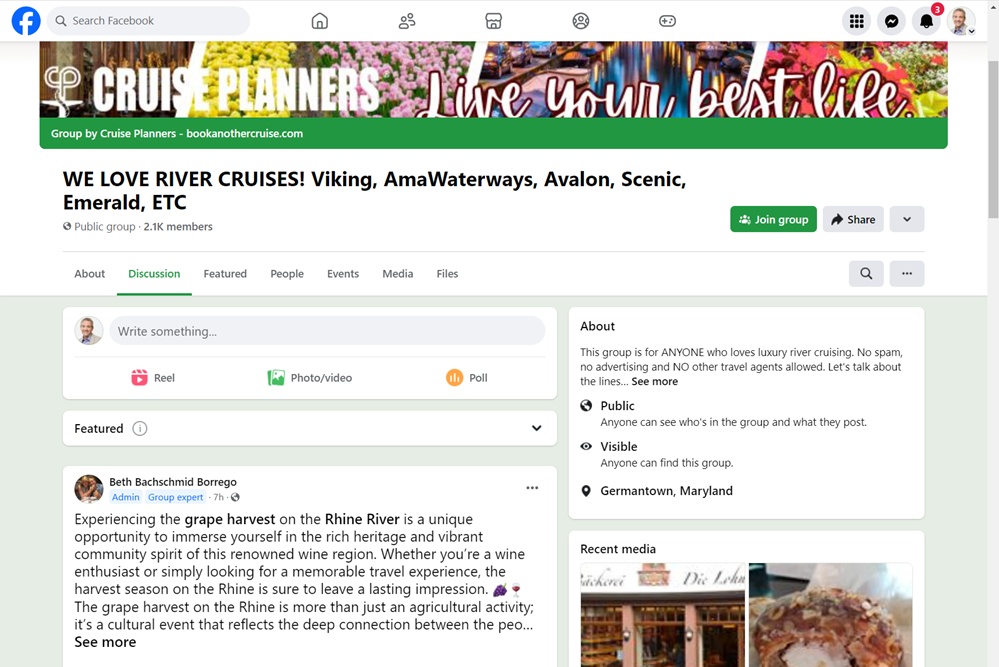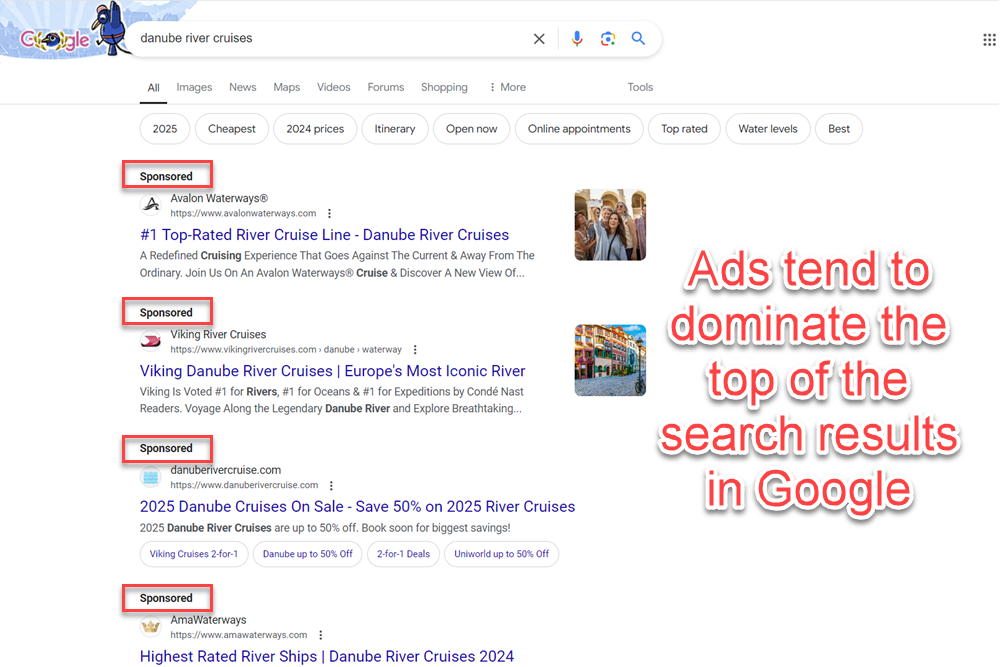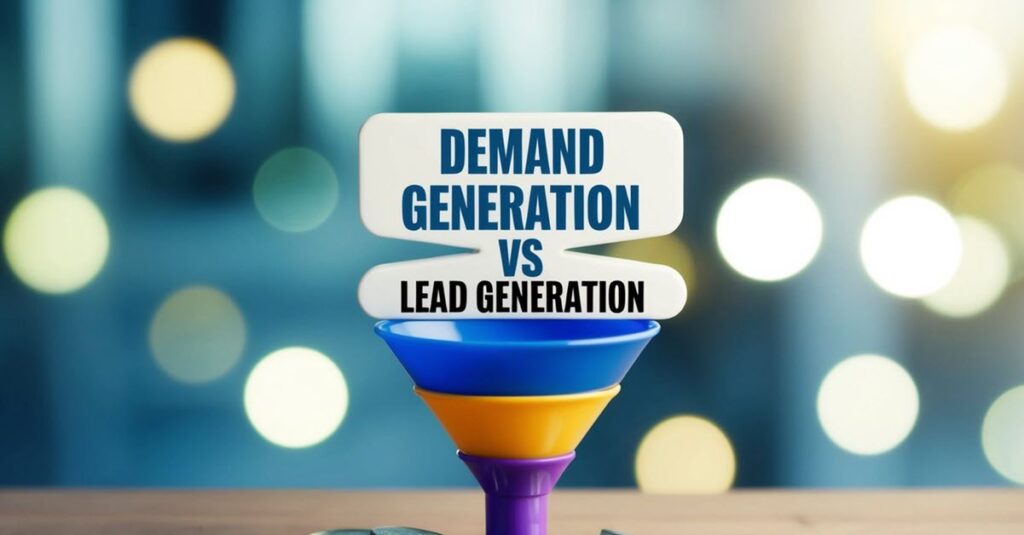Getting More Travelers for Your Travel Agency
Lead generation is a vital process for your travel business growth. It involves identifying and cultivating potential customers for your travel agency. While there are some travel leads who may become instant travelers for your travel business, lead generation efforts aim to capture the interest of qualified leads who may eventually book travel services through your agency.
Key Components of Travel Lead Generation:
- Target Audience: To have an effective marketing strategy, you should already know who the ideal customers are for your travel company. This should be based on your past customers, as well as who you ideal potential leads are.
- Value Proposition: You can’t be offering the exact same cookie cutter travel experiences that your competitors are offering. Travel marketers must be able to clearly differentiate their travel offerings from their competitors. You need to me able to show your travel leads that you are a uniquely perfect fit for their requirements.
- Marketing Channels: Use the right mix of channels to reach out to potential customers effectively. This means you need to take advantage of search engine optimization, social media, email marketing and paid search channels.
- Website: For any of these channels to be effective, you need to have a robust website that is able to convert prospects into clients. We’ll talk more about the importance of websites in just a moment.
B2B vs B2c Travel Agent Lead Generation
To be clear, the primary focus of this article is for travel service providers whose lead generation focuses directly on consumers who will be using their travel offerings. This differs from wholesale travel agencies who engage in B2B lead generation by selling packages to retail agencies.
Your Travel Business Website
In order to generate travel leads effectively, a travel agency’s website must not only draw visitors in but also provide a seamless experience that encourages them to take action. Your website is the hub of your digital marketing efforts. Its job is not only generating leads, but also converting those leads into paying travel customers.
Website Design and User Interface
When it comes to your web design don’t reinvent the wheel! You want your website visitors to be able to easily navigate your website to find the information they’re looking for. Keep a standard layout structure and experience. Usually this means horizontal navigation across the top of the website and the use of a logical, hierarchical structure.
The goal is NOT to create an “experience” for your potential client who visits your site. The primary goals for your website visitors are:
- Give them the information that they need quickly without making them hunt for information.
AND - Convey to the high quality leads visiting your website that you are the right choice for their travel needs.

In order to enhance your lead generation efforts, don’t confuse website your site visitors. Stick to a conventional website layout and make it easy for visitors to find what they are looking for.
Responsive Website Design
Your website must work great on mobile devices. According to similarweb.com, approximately 57% of website traffic in the United States is mobile traffic (similarweb, June 2024). Your website must be easy to use on mobile devices, or elese you’ll be missing out on approximately 50% of your potential customers.
Fast Website
Your website should also be extremely fast. People don’t want to wait for pages to load, and slow websites are extremely frustrating when on mobile devices.
Website Maintenance
Unfortunately, your work isn’t done when you publish your website. You need to make sure that your website is properly maintained. This means proper backups, update, and security are present. Many third party services (including FlexLeads) offer ongoing maintenance services so that you don’t have to keep track of changes in technology.
Website Analytics
It is essential that you know the true effectiveness of your marketing campaigns. This can be done by installing analytics on your site.
Once you have analytics installed on your site, you will have the quantifiable data that you need to make intelligent decisions on how to continuously improve your lead generation strategy. A. You can even run tests of different marketing messages to determine which messages resonate best with your target clients. As a result, you’ll know where to focus your marketing efforts
As an example, with analytics you can determine the number of leads that are coming in from SEO, Paid search, and email marketing campaigns. This will allow you to focus your limited marketing resources where they have the most impact in generating qualified leads for your business.
What Analytics Package Should be Used
Google offers a free analytics package (Google Analytics) – but it is extremely complex and is extremely challenging for all but the most technically inclined. I use Plausible Analytics which is among the easiest analytics platforms to install and use.

While it is a Paid Analytics Application, Plausible is Much More Intuitive than the Free Google Analytics Offering
Search Engine Optimization (SEO)
An amazing travel website is essential. But what good is a travel website if no one ever sees your website.
To illustrate how SEO works, you can see in the search below for “danube river cruises” that the ads are up top and shaded yellow. Advertisers incur a cost if their ads are clicked. If a searcher scrolls down without clicking on an ad (which happens much more often than clicking on an ad), they’ll see the organic SEO listings which are in the green, purple, and red boxes below (note that I have expanded these listings to make them easier to read off to the right in the image below).

Search Results for “danube river cruises”. Ads are shaded in yellow and the free (SEO) listings are in the different color boxes (and expanded off to the right)
SEO results are clicked on more than ads and can be a huge source of leads for your travel company, making SEO an essential component of your digital marketing strategy. With SEO, you drive more leads to your website by ranking high up in the search engines (namely Google) for terms that are relevant to your travel related services.
SEO involves two main components: content marketing and content optimization
Content Marketing
Content marketing can significantly boost your business by providing valuable, engaging information that attracts potential customers and establishes your agency as a trusted authority in the travel industry. Having a blog is the typical method to display interesting content. Blog marketing can be very effective at generating desirable travelers for your business.
What Kind of Content?
Well – what kind of content are your travelers typically interested in?
When prospective clients call you asking about your services, what are the most commonly asked questions? That is the type of content that should be featured on your website and in your blog.
Example content to feature on your website may include items like:
- travel guides
- destination spotlights
- packing tips
- client travel stories
Sharing content of some of your actual travelers with real life experiences is a powerful travel marketing tool.
This content has multiple benefits:
- You will generate many more organic leads (leads from SEO efforts)
- Your website is more likely to rank better in search engines for the types of trips you’re trying to promote
- When you convey your expertise through the content on your site, visitors will recognize you as an expert and be much more likely to convert from a prospect into a paying traveler (increased conversion rate)
- Not only can this help you rank better in search engines, but the content that you develop can be used on social media platforms like Facebook and Instagram as well.
Content Optimization
Content optimization for travel agency websites involves strategically crafting and structuring website content to improve search engine rankings, user experience, and your travel agency website conversion rates. It involves looking at what the search engines are already ranking high up in the results and improving upon the content that already exists.
It also involves structuring content logically, using proper heading tags (H1, H2, etc.) and creating easily scannable sections. Regular updates with fresh, relevant content, such as blog posts about travel destinations, travel advisories, or the latest news from destination countries can also help.
Social Media
Social Media should also be an essential part of your digital marketing strategy. The visual nature of many travel destinations makes considering the use of platforms like Facebook, Instagram, TikTok, and potentially even Twitter a must for your travel company.
Building a Social Media Presence
What Social Media Platforms do Your Target Prospects Use?
You’ll want to reach these users where they spend a lot of time. Look at Demographics of the various social media platforms for ideas.

A Travel Group Page Created by a Cruise Travel Agency on Facebook. Facebook Demographics are a great fit for European River Cruises
Narrow down the best social media channels for your brand. As an example, the demographics for TikTok show that nearly 50% of all users in the USA are under the age of 34, and 25% are under the age of 34 (Backlinko). If you’re focusing on younger, independent travelers without a lot of disposable income, you may wish to focus on TikTok.
Contrast this with Facebook – where nearly 60% of users in the United States are over the age of 35, and nearly 25% of users are over the age of 55. Generally, this demographic has more funds available for travel and may be looking for more luxury travel experiences (statista).
Social Media Advertising
While Social Media has a huge reach, in order to reliably get in front of your target audience, you’ll want to consider spending money on Facebook advertising.
Organic reach on Facebook is declining and will continue to go down. Whether you’ve created a Facebook Group for Travelers, or if you’ve created a Facebook page for your business (this is a must by the way), your page followers and group members aren’t guaranteed to see your posts.
So if you have 10,000 followers for your business Facebook page, you may notice that your reach is a small fraction of that.
In this post, the Facebook Ads Product Marketing Team lead attributes this to too much content on Facebook making it impossible to show updates from all sources a user follows. While this may be true, Facebook is in the business of making money. It is logical that they would steer businesses towards advertising – which is the most reliable way to reach your target audience on Facebook.
Fortunately, Facebook has highly customizable targeting options so that your ads can be targeted to your ideal client. Examples include:
- Income
- Net Worth
- Education
- Travel (adventure, beaches, cruises, ecotourism, mountains, lakes etc)


A Sneak Peak at Just Some of the Targeting Options Available on the Facebook Advertising Platform
Video Marketing on Social Media
Capitalize on video marketing to tell engaging stories about travel destinations. Short-form videos on TikTok can go viral, while longer content can go live on Facebook or use Instagram for deeper narratives. Use the same video content to promote your travel business on YouTube.
Influencer Marketing
Travel industry companies and travel service providers are often inundated with requests from “influencers” to get free travel or lodging in exchange for promoting travel services or travel products.
Influencer Due Diligence
Make Sure You’re Dealing with a Bona Fide Influencer
Focus on actual results when it comes to dealing with social media influencers. Influencers may have verifiable large audiences. However, there are ways for influencers to artificially inflate their audience and engagement statistics. In other words, influencer stats can be faked.
While audience numbers and engagement are a good starting point, you really need to dig deeper. Figure out who the influencers have worked with in the past. You can either ask the influencer directly, or contact their past clients that they have promoted. Learn the impact that these influencers have had on businesses prior to using their services.
Email Newsletter
After your website, If I had to pick the most important marketing channel for your lead generation efforts, it would be an email newsletter.
Newsletters are an invaluable marketing tool for travel agencies, offering numerous benefits that can significantly boost their business. Here’s why they are so important.
You Own Your Newsletter
Having one of your marketing channels disappear overnight can be traumatic, yet that’s exactly what can happen with Social Media and online advertising. Here’s why:
You Don’t Own Your Social Media Presence – Social media platforms can arbitrarily ban or remove you from their platform with little recourse. Support for the big tech companies is close to nonexistent. Even if you’re following all the rules, you can end up getting banned.
Ad Platforms Can Raise Prices Without Notice – Making Costs Prohibitive – Advertising on search engines and social media isn’t a truly competitive process based on actual supply and demand. The owners of search engines and social media can decide what prices they believe to be acceptable, and increase prices without notifying advertisers. Google made this clear during their antitrust trial in 2003 (“Google Confirms Inflating CPCs: What Advertisers Need to Know”)
I still advise that you have a social media presence and run ads when you’re getting a good return on your investment. However, the qualified leads you generate from ads and social media should be encouraged to opt in to your newsletter.
Best Possible Return on Investment (ROI)
Email Marketing and Content marketing had among the best ROI when compared to other forms of promotion. Only SEO and Content marketing were comparable (Statista)
Lead Nurturing
Email Newsletters provide an excellent opportunity to build a database of travel enthusiasts who are at different stages. They may not be ready to purchase when they sign up for your newsletter, but by consistently producing good email content, you will keep the members on your newsletter list engaged. The result is that when they’re ready to pull the trigger on a trip, you’ll already have their trust and they’ll be more likely to book with your company.
The best way to nurture leads is to not be too salesy in your newsletters. While you can still promote travel offerings, the majority of your newsletter content should be on providing great information, content, and stories to keep your list engaged.
Expertise
Your newsletter gives you the opportunity to demonstrate to your newsletter audience that you are an expert in your field without having it appear like it is a hard sell. Through the stories they tell, they will understand that when the time comes to book, they’ll use your services.
Tracking
With newsletter and website analytics, you’ll be able to track user behavior with respect to your newsletters. You’ll know who opens and reads your newsletter and who clicks through to your site. As a result, you’ll know what content resonates most with your readers – which allows you to zero in and create the content you know your audience will love.
Reviews & Testimonials: Proof You’re The Real Deal
You can – and should – communicate how incredible your travel agency is by detailing all the services you provide for travelers. To drive home the point that you’re as good as you say you are, customer reviews and first hand accounts from your clients are extremely valuable.
Be sure to collect reviews for your travel company from travelers after they return from their trip. If possible, share customer photos and video testimonials. These items will help to make your services and experiences that you provide much more tangible to your prospective clients.
Search Engine Advertising
Google Ads and Microsoft Ads
Google Ads and Microsoft Ads are powerful search engine marketing tools to drive potential travelers to your travel agency’s offerings. An overview of how each platform works to drive lead generation is provided below.
First, you’ll identify travel related terms that work well for your business. For example, if you cater to European River cruises, keywords to target may include phrases like “Danube River Cruises” or “Seine River Cruises”.

Google Ads’ Keyword Planner Tool
Keyword targeting can be a bit challenging as it isn’t always easy to surmise what people are actually searching for. There are many tools that you can use to find keywords including: The Google Keyword Planner Tools, Mangools KWFinder, and Ubersuggest.
Once you find the right keywords for your offering, you will create ads relevant for your keywords. If someone clicks on your ad, they will be taken to your website, where you can convert prospects into paying customers.
You can see in the screenshot below, that a search for “danube river cruises” in Google provides search results with ads dominating the top of the results. Google is at its heart an advertising company with the majority of its revenue coming from ads – which is why ads are so prominent on the search engine results page.

Ads for “danube river cruises” on a Google Search Results Page
If a prospective traveler clicks on one of these ads (marked as “Sponsored”), they will be taken to the advertiser’s website, where the advertiser can attempt to convert them into a paying traveler.
Note that while ads tend to dominate the search engine results page, there are free listings further down on the page that aren’t ads. These are the listings that are generated through search engine optimization activities. While a person conducting a search may have to scroll to see these ads, these free (or “organic”) listings are clicked more frequently than ads. Having a strong SEO strategy combined with paid search ads can give you multiple chances at getting a web searcher’s attention.


